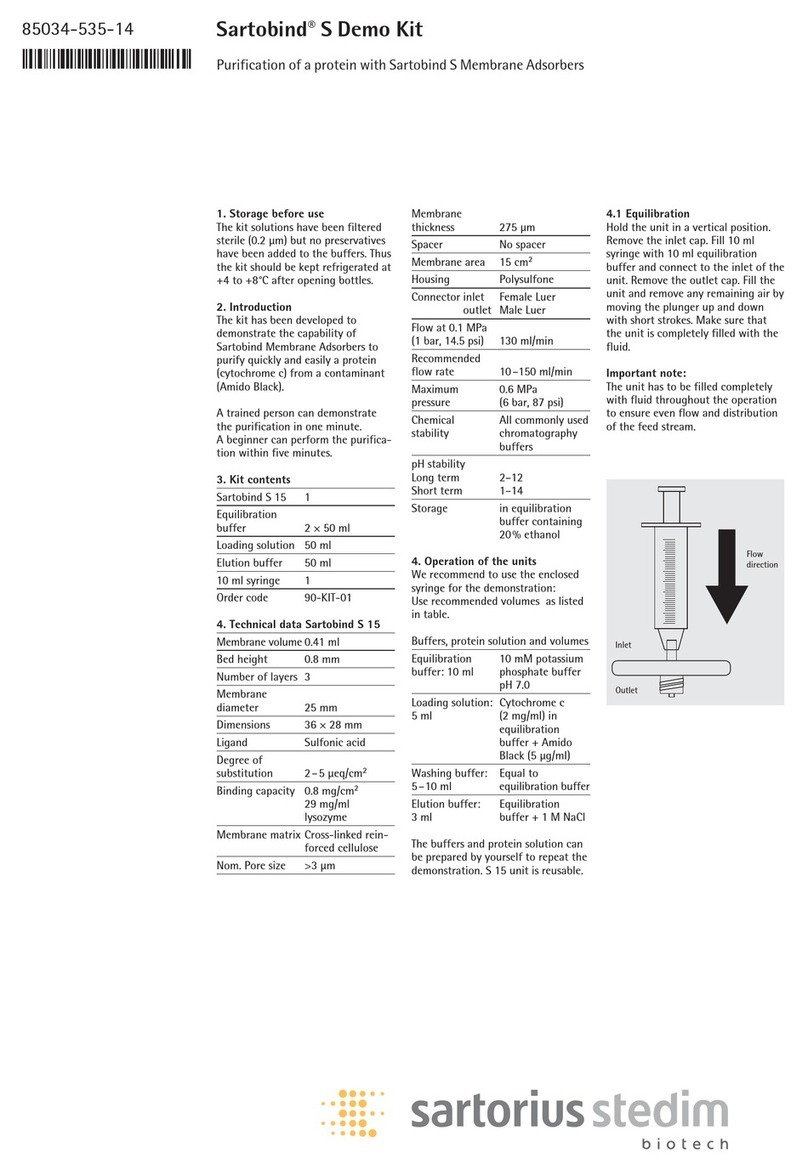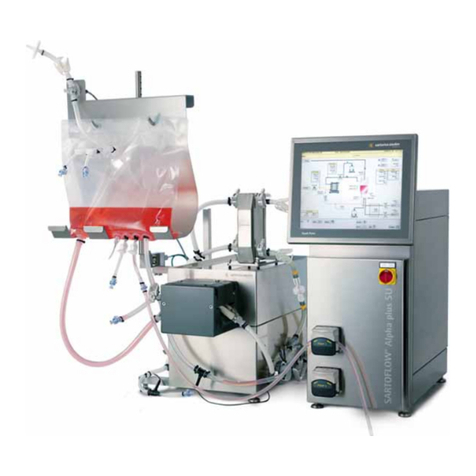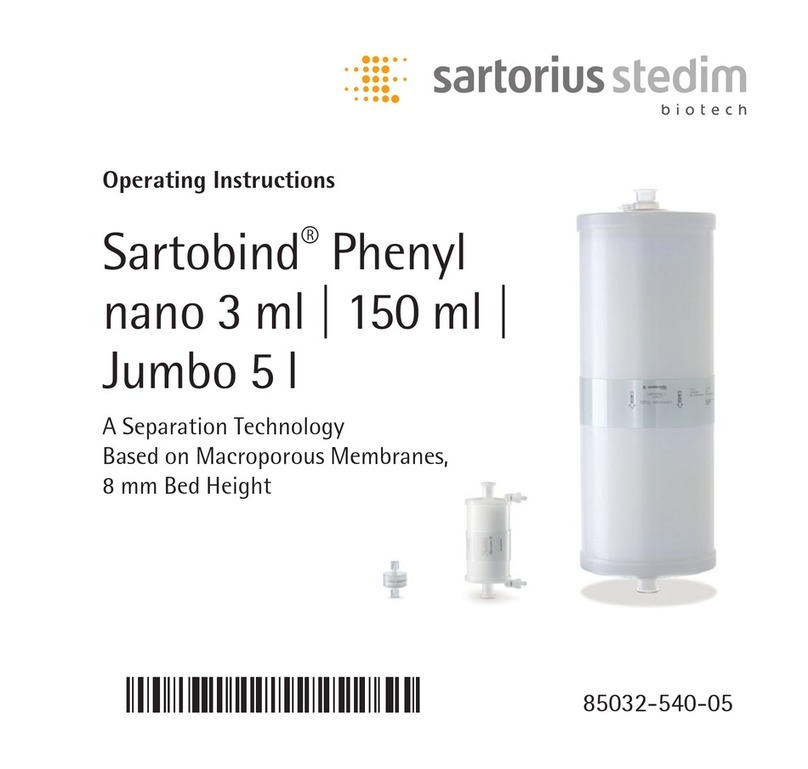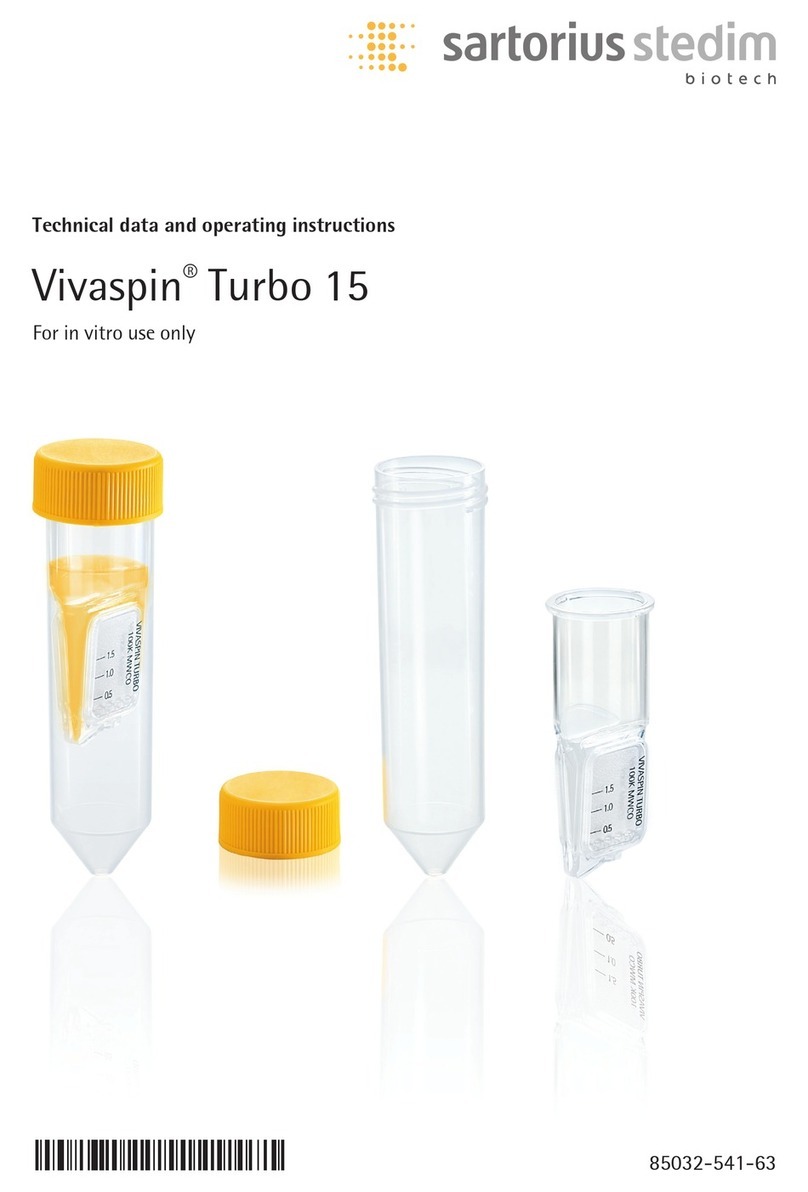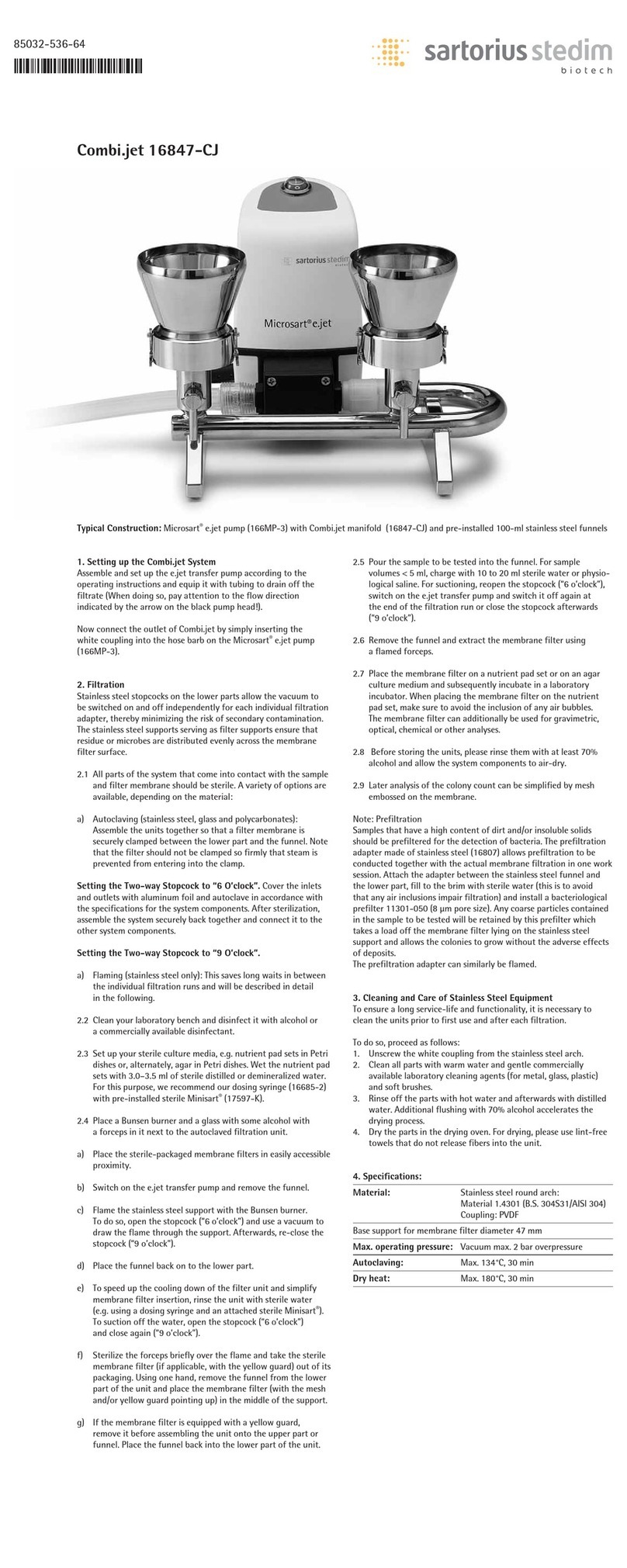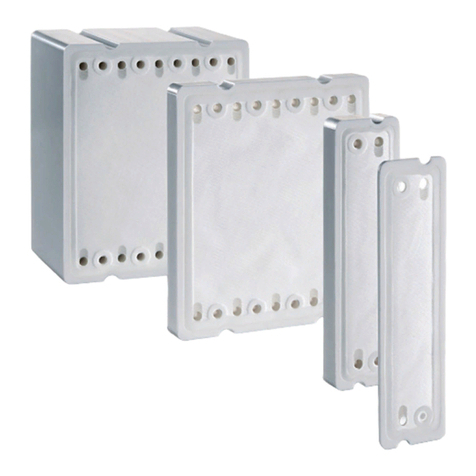4
1. Description, 2. Safety 3. Installation
Operating Conditions
– Note that the pumps may only be
used for their intended purpose.
The pumps must not be used in
areas where there is a danger of
explosion.
– For vacuum pumps: The gas dis-
charge at the pressure side must
be drained off safely and reliably.
Components connected to the
pumps must be designed to with-
stand the pneumatic performance
of the pumps (see table 2).
– Plug the pump only into properly
installed grounded outlets.
When the operation of the pump is
interrupted by the thermal switch,
the pump will re-start automatically
after cooling down. Take all care
necessary to prevent this leading to
a dangerous situation.
Specific safety instructions and
measures for the media being
handled must be observed.
– Use only original Sartorius Stedim
Biotech spare parts.
• The pumps conform to the safety
regulations of the EC Low Voltage
Directive 73/23 EEC, and of the EC
Directive 89/336 EEC concerning
Electromagnetic Compatibility.
The requirements of the following
harmonized standards are fulfilled:
EN 61010 part 1, EN 61000-6-1,
EN 61000-6-3.
– Choose a safe location (flat surface)
for the pump.
– Install the pump so as to ensure
adequate flow of air cooling.
– Fit the pump at the highest point
in the system, so that condensate
cannot collect in the head of the
pump – that prolongs working life
of structured diaphragm and pump.
– At the pump head, remove the
protection plugs from the hose
connectors.
– Mounting the accessory parts filter
or silencer (if present): If the pump
is used as a vacuum pump, mount
a silencer at the pressure side if
necessary. If the pump is used as
a compressor, mount a filter at the
suction side if necessary.
• Before mounting the filter or
silencer, unscrew the corresponding
hose connector from the threads in
the pump head.
– Connect the suction and pressure
lines (tube ID 4 mm). For flow
direction see marking on the pump
head.
– Arrange the suction and pressure
lines so that condensate cannot run
into the pump (sloping lines).
– For vacuum pumps: The gas dis-
charge at the pressure side must
be drained off safely and reliably.
– Plug the pump only into properly
installed grounded outlets.
– Compare the supply data with the
electrical data of the pump. The
voltage must not vary by more than
+10% and –10% from that shown
on the type-plate.
The pumps transfer, evacuate and
compress 100% oil-free.
1.1 Electrical Equipment
– See table 1 for full electrical data.
– The protection class of standard
versions is IP 20.
– The pumps are fitted with a thermal
– switch to protect against over-
loading.
1.2 Operating Conditions
– Handling air, gases, and vapours
at temperatures between
+5°C … +40°C.
– For maximum permissible operating
pressure, ultimate vacuum, and
flow capacity: see table 2.
The pumps must not be used in
areas where there is a danger of
explosion.
– The pumps must not be used for
liquids.
– Before pumping a medium, the
compatibility of materials of pump
head, diaphragm and valves with
the medium must be checked
(for pump materials: see table 3).
– Pumps that may be employed as
vacuum pump and compressor
must not be used to produce
vacuum and pressure at the same
time.
If your potential application lies
outside the above limits discuss it
with our technical adviser (see last
page for contact address).
1.3 Ambient Condition
When the pumps are operating the
following ambient conditions must
be maintained:
– Ambient temperature during
operation: between +5°C … +40°C.
– During operation an adequate
supply of air for cooling must be
provided.
– The pumps must not be used in
areas where there is a danger of
explosion.
1.4 Pump materials
See table 3.
!
!
!
!
!
